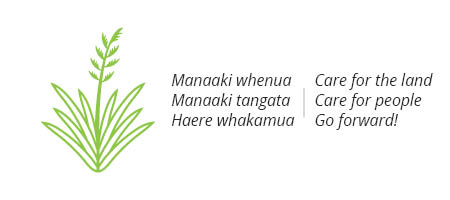Biodiversity and Biosecurity | Te Rerenga Rauropi me Te Whakahaumaru Rauropi
We play a significant role in ensuring a thriving and resilient Canterbury region based on a natural environment that supports cultural, physical and economic wellbeing for all.
 There are five work programmes in this portfolio:
There are five work programmes in this portfolio:
- Leading and partnering for biodiversity outcomes
- Regional pest management
- Priority habitats and wetland protection
- Braided River Revival/Whakahaumanu Ngā Awa ā Pākihi
- Me Uru Rākau.
Leading and partnering for biodiversity outcomes
Working with others on a shared regional approach to biodiversity is key to protecting and restoring Canterbury’s indigenous biodiversity.
As part of this programme, we are working with others to revitalise the Canterbury Biodiversity Strategy - a non-statutory document with a region wide vision for shared goals and priorities for biodiversity initiatives.
We are partnering with mana whenua to identify and protect kaitiakitanga roles and valued places.
We support new initiatives that support landscape-scale alignment work. We are already working alongside Pest Free Banks Peninsula.
Monitoring biodiversity across the region through mapping and data, will help us understand the success of initiatives and contribute to national monitoring of biodiversity.
Regional pest management
By intervening early and working with others, we can protect biodiversity, economic production and mahinga kai from harm caused by pests.
We implement the Canterbury Regional Pest Management Plan this work includes education, inspections, control, advice, monitoring and compliance.
To protect the region from new pests we use surveillance, investigations and pathway management planning. Research and development will help improve the methods we’re using for pest management and inform the decisions we make for the future.
We collaborate on biosecurity projects:
- National Wilding Conifer Control Programme
- Wallaby Management Programme
- South Island Councils’ Biosecurity Alliance.
More information can be found on our pest management page.
Priority habitats and wetland protection
We are working with the community on a programme of biodiversity initiatives to protect, enhance and regenerate priority habitats and create the corridors and linkages that connect them. These initiatives are align with the Canterbury Biodiversity Strategy and Canterbury Water Management Strategy.
Wetlands are a focus for us as they are one of our most depleted ecosystem types with loss usually attributed to drainage for land development. We are supporting community-led sustainable management of wetlands through the Managing Wetland as Farm Assets project and developing Wetlands Action Plans with landowners.
As part of this work programme, we raise awareness of the importance of wetlands and monitor resource consents for wetland-related activities.
Find out more about our unique ecosystems.
Braided river revival | Whakahaumanu Ngā Awa ā Pākihi
Canterbury’s braided rivers are iconic, ecological corridors running from the mountains to the sea/ki uta ki tai. We are coordinating a regional alliance to revive them and restore connections between people and rivers. We're working with our partners to develop and implement river revival strategies for the Rakahuri and Rangitata rivers, with other rivers to be included later.
We’re continuing landscape scale projects targeting weed and predator control and enhancing natural habitats and biodiversity. We own land used for soil and water conservation as well as flood protection infrastructure.
Our regional parks showcase some of the region's braided rivers, are home of our flood protection infrastructure and provide opportunities for mahinga kai, biodiversity, recreation and events.
Me Uru Rākau
Me Uru Rākau is a catchment-based protection, planting and restoration programme designed to support communities to enhance biodiversity in their area.
The work will have impacts across all our activities by benefiting water quality, erosion control, mahinga kai, community engagement and climate change responses.
We will target priority ecological catchment and work in partnership with landowners and community groups. By working together and sharing knowledge, technical advice, resources and removing barriers, we want to enable on-the-ground action.
We’re also focused on developing and leveraging partnerships to attract external funding and investment in local priorities.
How is this portfolio funded?
To find out how this portfolio is funded, view the rates tool.
